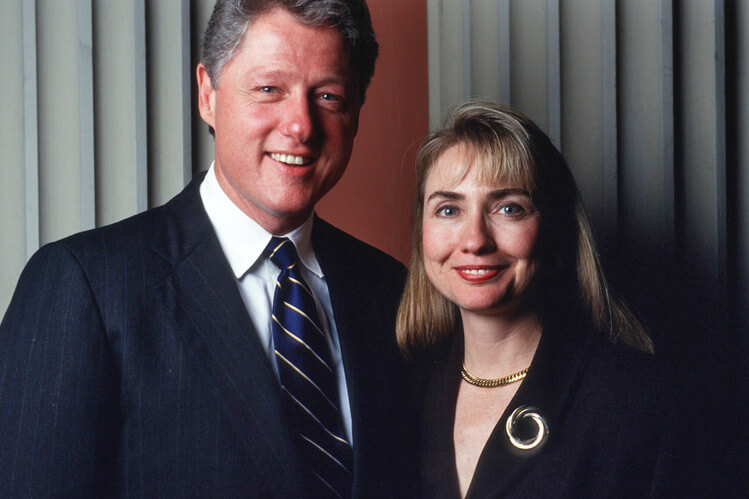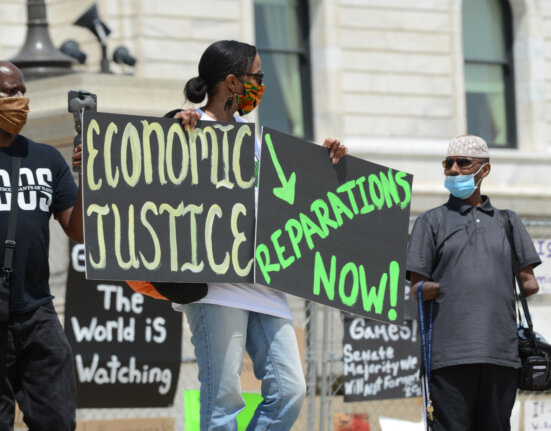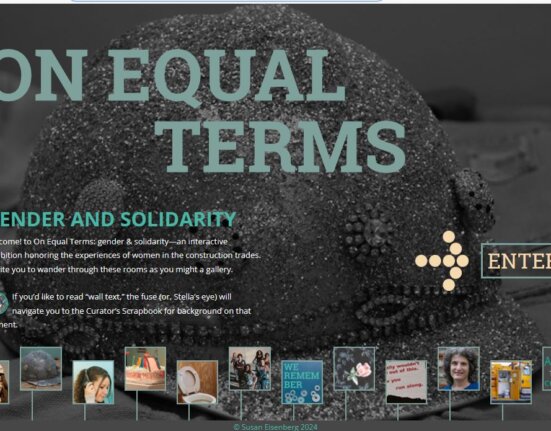Much has been made in the recent campaign about the alienation of working-class whites from the Democratic Party. Michael Pierce shows this is a path long traveled; Bill Clinton undermined the budding multi-racial labor coalition in 1970s Arkansas.
In a horrendous election night for the Hillary Clinton, the only bright spot was Nevada, where Culinary Workers Union Local 226’s massive get-out-the-vote operation ensured that the state’s six electoral votes went into the Democratic column. Not only did the local get their Hispanic, Asian, African-American, and white members to the polls but its sophisticated operation also rallied other members of Nevada’s diverse working-class.
In much of the rest of the country, the working-class voters—especially white ones—stayed home, alienated from both a Democratic candidate who made little effort to address their economic concerns and a Republican candidate who stirred up hate. Class-based union-led mobilization operations like the one in Nevada have become rare, but they were central to the Democratic Party’s successes from the 1930s through the 1980s even in what are now deep red states like Arkansas.

The irony is that the decline of such mobilization efforts can be traced back to Bill Clinton and his activities in 1970s Arkansas, when he and his allies began undermining the labor movement and its efforts to educate working-class voters and get them to the polls on behalf of the Democratic Party. Not only did Bill Clinton refuse to support efforts to strengthen unions at a time when local companies like Walmart and Tyson Foods were becoming more aggressive in their “union avoidance” methods, but he also began to bait the labor movement to gain electoral advantage. He would ride his Arkansas strategies into the White House in 1992, transforming the Democratic Party along the way.
In Arkansas, labor’s efforts to build a biracial working-class coalition began in the 1950s, when the state’s white trade union leaders—in an unsuccessful attempt to defeat Sen. John McClellan—secured funds from the national labor federations to buy poll tax receipts for distribution in black communities. Labor and black activists cemented their budding alliance during Little Rock’s Central High crisis, when white trade unionists worked in tandem with black college students to drive black voters to the polls to reopen the schools shut by segregationists.
In 1964, the AFL-CIO’s political arm funded the successful effort of Arkansas labor and civil rights activists to replace the state’s poll tax with a simplified permanent registration system. These efforts were so successful in getting black voters to the polls that neither Arkansas nor any of its counties were covered by the pre-clearance procedures of the Voting Rights Act of 1965. From the 1960s into the 1980s, the Arkansas AFL-CIO worked with groups like the Southern Regional Council, Student Nonviolent Coordinating Committee, Arkansas Community Organizations for Reform Now and local civil rights groups in sophisticated operations to get working-class voters to the polls.
These labor-funded efforts opened the state’s political system to working-class voters. In the 1940s, V. O. Key documented the state’s planters and industrialists’ grip on electoral politics before concluding, “in Arkansas, more than almost any other southern state, social and economic issues of significance to the people have lain ignored.” In 1948, just 242,475 Arkansans cast votes in the presidential election, but this number increased 251% to 609,050 by 1968 even though the state’s population remained virtually unchanged (1.909 million in 1950; 1.923 million in 1970).

No one expressed the aims of this labor-funded biracial working-class coalition as well as Ernest Green, the oldest of the nine students to integrate Central High, who in 1967 declared, “There is no alternative but that Negroes, white workers, and farmers must unite behind the labor movement in its struggle against unemployment, low wages, discrimination, union-busting, and, ultimately, against poverty….for if we stand divided and separated, big business and big industry will triumph again in the South.”
Labor’s efforts to open up Arkansas’s political system to working-class blacks and whites and get them to the polls ushered in the state’s liberal heyday in the first half of the 1970s, making possible the elections of Bill Clinton and longtime senators David Pryor and Dale Bumpers. During this era, the General Assembly revised the tax code along progressive lines and increased spending on education and other social provisions, and voters approved measures to regulate more aggressively banks, hospitals, insurance companies, and polluting industries.
Bill Clinton, Bumpers, and Pryor—known as the Big Three in Arkansas politics—also relied on labor funds and mobilization efforts early in their political careers. For instance, labor bankrolled Bill Clinton’s first run for elective office—his failed 1974 campaign for U.S. Congress. This money made it possible for him to purchase television airtime throughout the state, helping make him the darling of Arkansas’s political establishment and facilitating his meteoric rise.

But once in office, Clinton and his allies turned their backs on the labor movement that had made their careers possible, largely in hopes of discouraging anti-union companies from funding potential rivals or to undermine potential rivals on the left. Although political commentators date the birth of Clintonian triangulation—i.e. adopting some of your opponent’s policies to distance yourself from your base, move to the center, and broaden your electoral appeal—to the aftermath of the 1994 elections, Bill Clinton along with Pryor and Bumpers began employing it in the 1970s and the Arkansas labor movement was the target.
There is no better example of this triangulation than the Labor Reform Bill of 1978. As anti-union enterprises found new ways to circumvent the National Labor Relations Board procedures—dragging out certification processes, illegally firing union activists and taking years to litigate challenges to these dismissals, and purposely violating laws knowing that the minimal fines would be a small price to pay to keep unions at bay—unions sought relief in the form of a new law to eliminate these practices. But Bill Clinton, Pryor, and Bumpers worked enthusiastically against the bill. Pryor made opposition the cornerstone of his 1978 senate bid. Bill Clinton, with the help of political consultant Dick Morris, wrote a series of ads for Pryor’s campaign warning that unions were “disastrous for the economy of Arkansas.” Bumpers joined the Senate filibuster that killed the bill.
Triangulation made Clinton and his allies nearly unbeatable. Work with liberals on social issues and gestures to the black community allowed them to retain the backing of much of the left (who really had no one else to support), and their labor policies attracted the support (with various degrees of enthusiasm) of business conservatives. Unable to counter employer aggressiveness during a period of rampant inflation and trade pressures, Arkansas’s labor movement and the liberalism that it did so much to sustain withered, and the state began a political shift to the right. The Big Three easily accommodated themselves to this shift, supporting free trade, economic deregulation, and other elements of neoliberalism.

Throughout the 1980s, the ties between the Big Three and stridently anti-union Arkansas enterprises grew. Hillary Clinton joined Walmart’s board of directors, and Pryor and Bumpers became especially close to Tyson Foods and the poultry industry. As a new pro-business economic consensus formed, social and cultural concerns became the defining issues in electoral politics, and the economic needs of workers fell off the Democratic agenda.
Clinton took the strategy that he and Pryor and Bumpers perfected in 1970s Arkansas onto the campaign trail in 1992. He traveled the country, telling everyone that he was a “different kind of Democrat,” scolding trade unionists for their outdated economic ideas and touting his close ties to Tyson and Walmart. For the first time since the early 1930s, the Democratic presidential nominee refused to embrace the labor movement and the politics of class.
Much has been made in the recent campaign about the alienation of working-class whites from the Democratic Party. Understanding Bill Clinton’s Arkansas not only helps explain why but also makes it clear that the Democratic Party has to support the labor movement and economic policies that are friendly to workers if it wants to reclaim its status as champion of all working people.








12 Comments
Comments are closed.